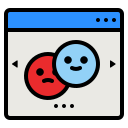Build Faster: Low-Code/No-Code Platforms for Rapid Prototyping
A working definition that ships
Low-code/no-code platforms accelerate software creation using visual builders, opinionated defaults, and reusable blocks. For rapid prototyping, the goal is not perfection, but speed to insight. Share your definition in the comments and compare experiences from your projects.
Picking the right canvas
Choose tools aligned with your prototype’s risk: data modeling, authentication, responsive UI, and integrations. Match capabilities to your hypothesis. Have a favorite for forms, portals, or automation? Tell us what works and why you trust it.
Constraints that spark creativity
Templates and limited options can unlock momentum, forcing crisp decisions and faster learning. Embrace defaults, then iterate. If constraints helped your team ship faster, subscribe and share your story to guide others racing toward validation.



From Idea to Clickable Prototype in 48 Hours
Write one-sentence value proposition, capture top two user journeys, and sketch screens. Keep scope brutal. Low-code thrives on clarity. Post your top user flow in the comments and we will suggest components to implement it faster.
From Idea to Clickable Prototype in 48 Hours
Model entities visually, wire in authentication, connect spreadsheets or databases, and trigger workflows on events. Use prebuilt connectors first. If you hit an integration snag, describe it below; the community can recommend a proven workaround.
Internal tools and dashboards
When your prototype needs CRUD, permissions, and charts, pick platforms that bind to data quickly and scaffold UI tables. What metrics matter most in your internal dashboards? Comment with your must-have components and we will curate template suggestions.
Customer-facing web apps and portals
Prioritize responsive layouts, branded theming, and clean onboarding flows. Templates for sign-up, profile, and error states save hours. If you have a portal success story, share the stack you used so others can learn and avoid common pitfalls.
Process automation and workflows
Use visual workflow builders to orchestrate approvals, notifications, and scheduled tasks. Start with the critical path, then add edge cases. Tell us your most effective automation trigger; we will compile community favorites in a subscriber-only roundup.
Adopt a small set of components—buttons, forms, cards—and reuse them. Consistency improves comprehension and testing fidelity. Which component library speeds you up most? Comment below and help newcomers pick dependable building blocks for their prototypes.
Designing Delight: UI/UX at Low-Code Speed

Versioning, branching, and rollback
Adopt environments and backups before growth hits. Some platforms offer visual diffing and safe publishing. Share your release rituals in the comments; we will compile playbooks to help subscribers de-risk their first real launch.

Security, data ownership, and compliance
Audit permissions, encryption, and data residency early. Document access models and backup policies. If compliance is your blocker, describe your context; the community can point to architectures others have passed through review successfully.
A Weekend Story: How a Team Validated a Product
A small nonprofit needed a volunteer scheduling tool. Budget: near zero. They chose a no-code portal, a spreadsheet backend, and two automations. Comment if you have faced similar pressure and what trade-offs you accepted to move fast.

A Weekend Story: How a Team Validated a Product
They designed a signup form, approval flow, and calendar view. Email notifications handled confirmations and reminders. The team iterated hourly from live feedback. Share your fastest build; we will highlight standout stories in next week’s newsletter.
Join the Journey: Learn, Share, and Grow
01
Templates and starter kits to accelerate
We curate prototyping templates for portals, dashboards, and automations. Suggest a template you love, and we will review it in an upcoming article. Subscribe to get fresh starters and time-saving checklists in your inbox.
02
Extend with code when it truly adds value
Use custom code for differentiated logic, integrations, or performance hotspots. Keep the rest visual to stay fast. Tell us where you drew the line, and we will feature practical boundaries teams use successfully.
03
Your voice: questions, war stories, and wins
Post your toughest challenge or biggest victory with low-code/no-code prototyping. We respond, learn together, and shape future topics from your needs. Comment, subscribe, and invite a teammate who should be building faster with you.
